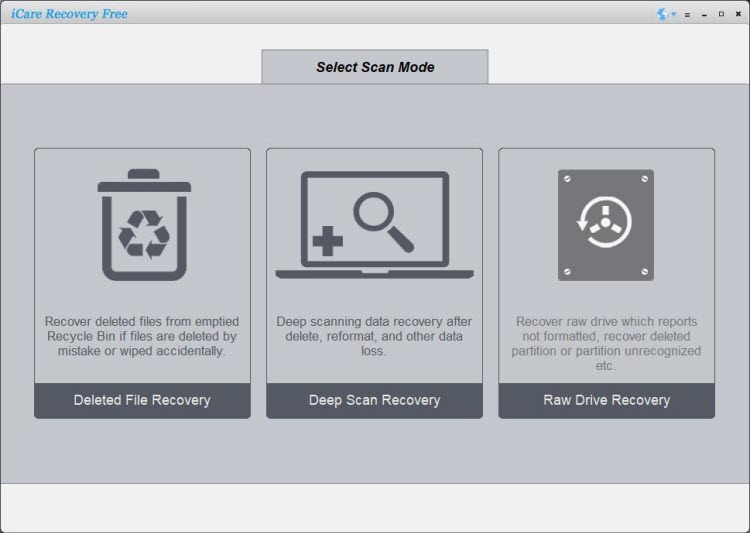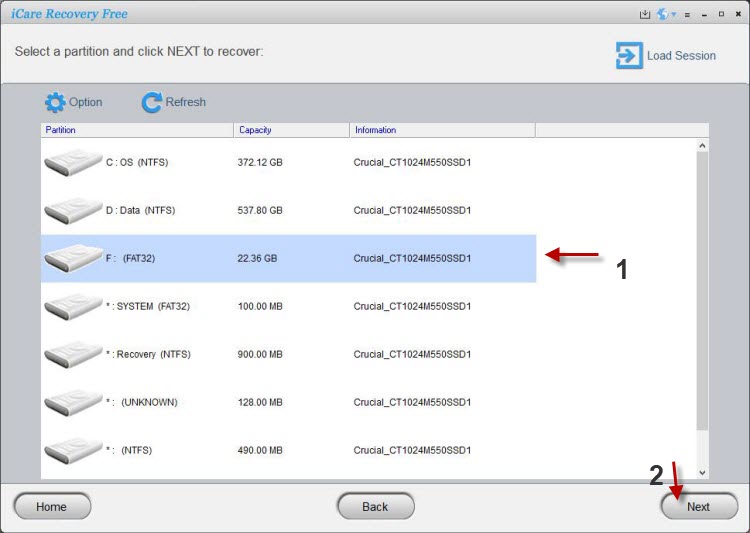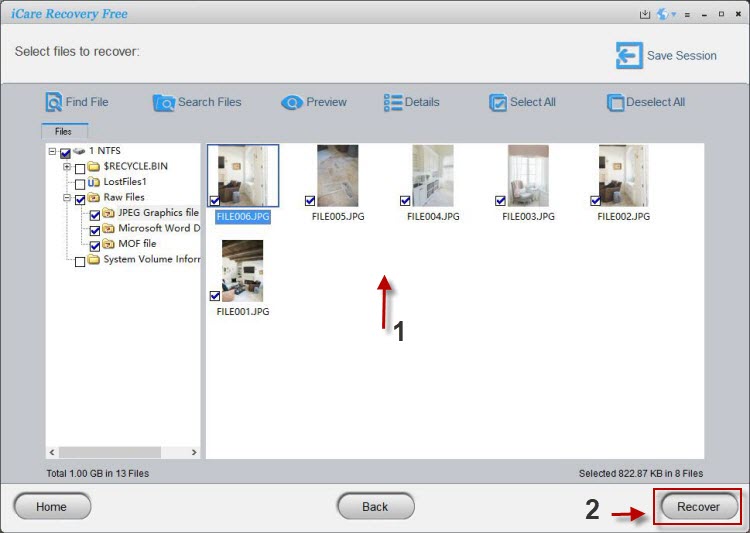RAID 1 File Recovery
Is it possible to restore data from RAID 1 hard drive after deleting, formatting or even when RAID 1 array fails?
The answer is yes! Usually, data gets lost from RAID 1 array in three situations, namely data loss due to human error, data loss due to RAID 1 drive failure and data loss due to hard drive physical damage. When files are lost due to human error and RAID 1 array failure, you can get back all lost files as long as the data is not overwritten. However, if hard drive suffers physical damage, you might be unable to restore lost data.
This article will share solution for RAID 1 file recovery in different data loss situations except hard drive physical damage.
Rebuild raid 1 without losing data
Video: how to rebuild raid 1 no data loss
Rebuilding a RAID 1 array without losing data requires careful steps to ensure data integrity. Here's a general guide to help you rebuild a RAID 1 array without data loss:
-
Identify the failed drive: Determine which drive in the RAID 1 array has failed. Most RAID management software or hardware will indicate the failed drive.
-
Replace the failed drive: Power down your system and physically replace the failed drive with a new one of the same or larger capacity. Ensure that the replacement drive is compatible with your RAID controller or software.
-
Boot into RAID management: Power on your system and enter the RAID management interface. This is typically accessed through a specific key combination during the boot process or via software provided by the RAID controller.
-
Initiate the rebuild: In the RAID management interface, locate the option to initiate a rebuild or sync the new drive with the existing drive. This will start the process of copying the data from the healthy drive to the new drive.
-
Monitor the rebuild process: Keep an eye on the RAID management interface to monitor the progress of the rebuild. This process can take some time, depending on the size of the drives and the amount of data stored on them.
-
Verify the rebuild: Once the rebuild process completes, verify that the new drive is functioning correctly and is in sync with the healthy drive. Check for any error messages or warnings in the RAID management interface.
-
Test the RAID array: Perform tests on the RAID array to ensure that it is functioning properly. This can involve checking file access, running disk integrity checks, or verifying the RAID status using diagnostic tools provided by the RAID controller or software.
It's crucial to note that these steps are a general guideline, and the exact process may vary depending on your specific RAID controller or software. It is strongly recommended to consult the documentation or support resources provided by the RAID controller manufacturer or software vendor for detailed instructions tailored to your setup. Additionally, having a backup of your data is always a good practice to protect against any potential data loss during the rebuild process or other unforeseen issues.
Also watch this video: How to create raid 1 volume without losing data
RAID 1 Data Recovery with Software
Whether files got lost due to human mistake or hard drive failure, you can use iCare Data Recovery Free , a data recovery program for all Window users, to perform lost file recovery. This data recovery software provides an easy way to restore all lost files such as images, videos, music, etc from any hard drives like Western Digital, Seagate, Samsung, Maxtor, Kingston, Hitachi, etc which was used to create the RAID 1 array. It is a read-only data recovery program, so it does not modifying any previous information or cause any damage to the RAID array by using this software to recover files.
Steps to Recover Files off RAID 1 Hard Drive
Preparation: Free download and install iCare Data Recovery on Windows computer. You should not install the software to the drive where data got lost. Then, you can run the data recovery software and follow the steps below to recover files from RAID array:
Step1. You should select a proper scan mode in order to recover files from RAID 1 array.

Step2. Choose the RAID 1 drive where data got lost and then the software will scan it to search lost files. You just need to wait patiently when the software is scanning.

Step3. Preview found files after scanning and then save the lost data to another drive.

Possible Reasons for RAID 1 Volume Data Loss
As mentioned above, data usually gets lost from a device in 3 situations, as below:
1. Data loss due to human mistake
Everybody makes mistake, so do you. You might make mistake sometimes and lose important data from RAID 1 array. For instance:
- Mistakenly press wrong button and delete files from RAID 1 volume (Probably, you wrongly press Shift + Delete button to delete selected files from RAID 1 volume without moving it to recycle bin; Or you might mistakenly delete files from recycle bin after erasing them from RAID 1 drive)
- Mistakenly format disk drive in RAID 1 array (You can perform a quick format or complete format on RAID 1 array, which could erase all data from the formatted drive)
- You might make some other mistake which results in data loss on RAID 1 volume (For example, files get lost after cutting them from one drive to another)
2. Data loss due to RAID 1 array failure
RAID 1 array is also created by 2 hard disks at least. And you may run into RAID 1 array failure problem when hard drive is corrupted in the array. Since RAID 1 array provides data redundancy and protect it against from hard drive failure, you can restore data from another hard drive when one hard drive failed. However, if both hard drives are corrupted, and when you are unable to restore data from another hard drive, you need to rely on iCare Data Recovery which enables you to restore corrupted RAID hard drive data. When RAID 1 array fails, you might be unable to access the drive but receive following error message:
- Disk drive is not formatted do you want to format it now?
- RAID 1 drive is not readable or recognized
- File system of RAID 1 drive turns to RAW format
3. Data loss due to hard drive physical damage
Physical damage refers to the damage that is not able to be restored, such as water damage, fire damage or the hard drive is damaged into several pieces, etc. When hard drive is physically damaged, it is unable to retrieve files from the RAID 1 array because system does not recognize the drive.
Tips for RAID 1 File Recovery
When files got lost due to deleting or formatting, you should pay attention to following points in order to get back all lost data from RAID 1 volume:
- You should not write new data to the RAID 1 drive where data got lost. If the previous lost data is overwritten by new data, you will lose the chance to perform deleted file recovery or format recovery.
- You should protect the hard drive from being physically damaged because data is not recoverable from a drive that is physically damaged.
Common RAID 1 Hard Drive Failures
As a matter of fact, the most common reason for RAID 1 data loss is hard drive failure. Usually, you might face following RAID 1 array failures:
- System reports "primary master hard disk fail" message when you boot your computer.
- PC says message like "Smart failure predicted on primary master" and "Immediately backup your data and replace your hard disk drive. A failure may be imminent". If you receive such kind of message, you have to change a new hard drive in order to resolve the problem.
- You receive message like "Device error" or "Non-system disk or disk error, replace strike any key when ready" after booting computer.
- PC shows message "No ROM basic, system halted" after booting. If you get this message, probably the bootstrap is corrupted or infected with virus.
- System shows message "Error loading operating system" or "Missing operating system" after starting the computer. When you receive this error message, probably some errors occur on boot record.
You usually cannot access data stored on RAID 1 array when PC shows error message like above, in which situation you will think that the RAID array failed. Since RAID array is created by hard disks, the fact is the hard drive fails that result in RAID array inaccessible.
Last updated on Nov 28, 2023
Related Articles
- raw raid volume recovery
- i got unformatted error on raid 5 drive
- convert raw disk to ntfs without rebuilding raid 5
- recover files deleted from my seagate external hard drive
- recover data from a cf card that shows an error message on camera

